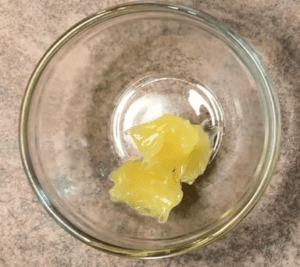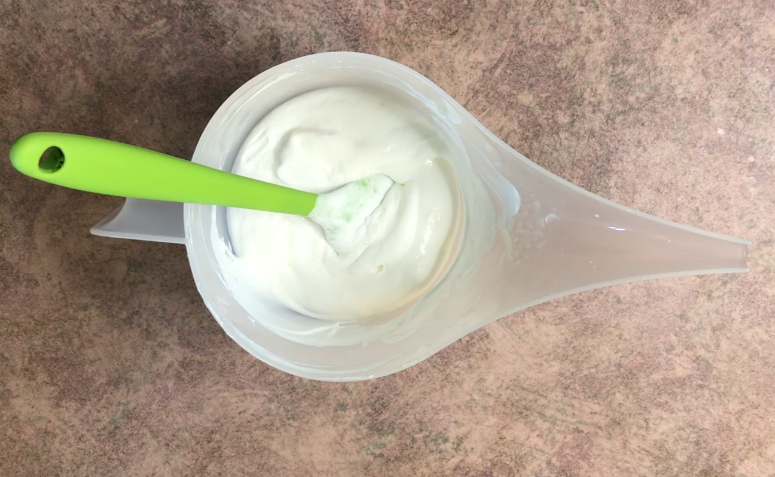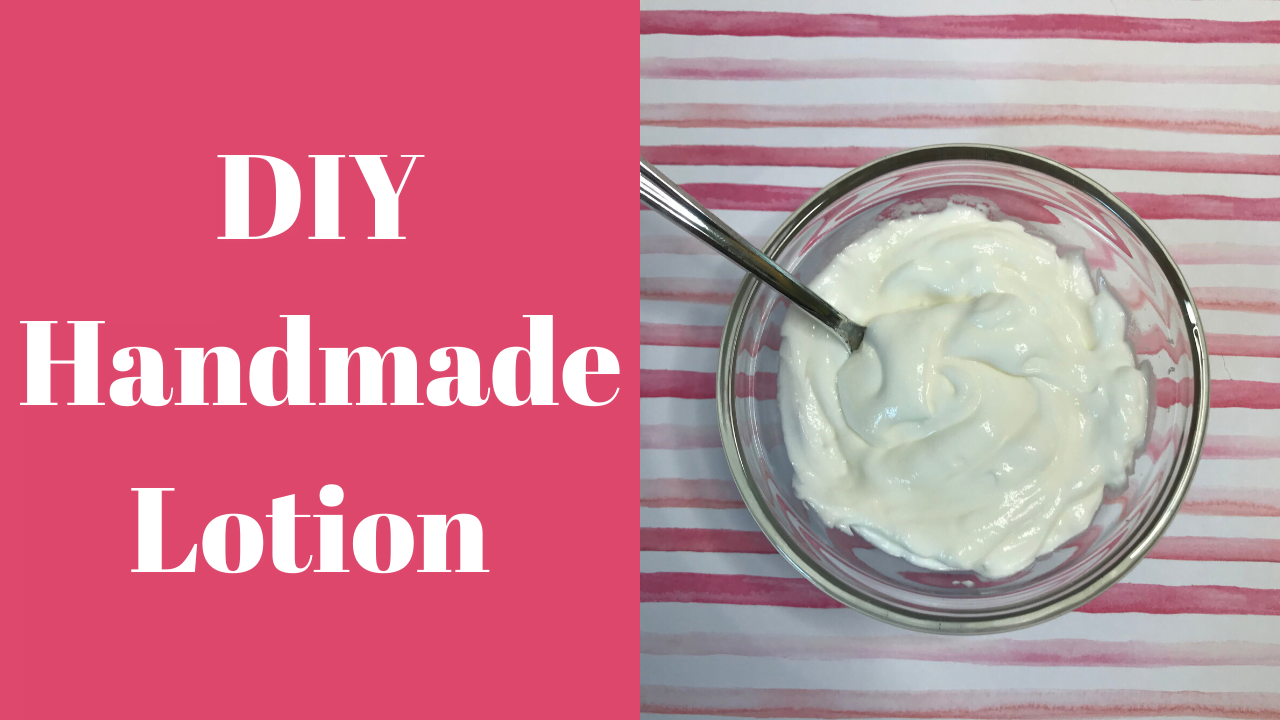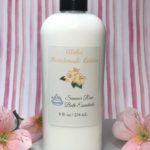So, you want to learn how to make lotion at home? Making body care for the first time can feel overwhelming, maybe even intimidating. My best advice is just to do it, make your first batch of homemade lotion today.
Table of Contents
Prefer to watch this project instead of reading it?
You will learn along the way. As with anything else, there is a learning curve. You are going to make some silly mistakes, but these are valuable lessons.
When trying a new recipe for the first time I will make a small batch, for lotion it’s normally about 2 ounces. That way if it doesn’t turn out the way I had hoped, I didn’t waste a bunch of ingredients.
In fact, in my first YouTube video on how to make lotion, I spilled it everywhere. Learned a lesson though… always take the top of the stick blender before you let it go! In this post I am going to show you how to make lotion from scratch.
What Constitutes A Good Lotion?
This is such a difficult question to answer, since it is very subjective. You have the hydrating lotions, the super hydrating, the greasy, the non greasy, the list goes on and on. Remember, that all the ingredients can be substituted. You can totally customize this recipe for your skin type.
Today, I am going to show you how to make a super hydrating homemade lotion. This lotion is perfect for hydrating your hands and body. I like to use it right after taking a shower to really lock the moisture in.
Can I Use Vitamin E or Essential Oils, instead of a preservative in my handmade lotion to keep it all natural?
No. It is true that vitamin E and certain essential oils have anti-bacterial properties, but they are not sufficient for a lotion. Remember, we are adding water to our lotion and leaving it out… with out a preservative this will be a breading ground for bacteria, mold and yeast. Vitamin E has antioxidants, which can help to slow oils from going rancid. It is great for extending the life of your product, but it ain’t stopping that bacteria.
You are spending all this time and effort learning to make lotion, you want to be sure that it will be safe to use.
How Do Lotions Work?
In a deep moisturizing lotion are are going to be focusing on three main components: Humectant, occlusive and emollient. If you haven’t heard of these you’re probably thinking, what the heck? Ok, let me break this down. Learn even more here!
Humectant – Humectants attract water to them. If you have ever used vegetable glycerin, you probably had a little bit drip down the side of the bottle. When you come back the bottle is all wet. This is because, the vegetable glycerin draws the moisture from the air to it’s self.
Fun fact about humectants, they tend to be really sticky ingredients. Again, think of vegetable glycerin. This is one of my go to ingredients in everything, but only at a small percentage.
It is like that old saying, too much of a good thing is a bad thing. If you put too much in your recipe, you are going to feel all sticky. Another example of a natural humectant is honey.
Occlusive – Basically, an occlusive will fill all the small cracks and create a thin barrier over the skin. This barrier is going to be what traps moisture on your skin. The main types of occlusives are lanolin, cocoa butter and dimethicone.
Emollient – These smooth out the surface of skin, making your skin feel oh so soft. The main types are shea butter, almond oil and jojoba oil.
Some links are “affiliate links”, because I am an Amazon associate and I earn from qualifying purchases. There is no additional cost to you, the price of this item is the same whether it is an affiliate link or not.
Our recipe for making lotion is broken out into three phases:
The three phases that we will have in this homemade lotion formula are the Water Phase, Oil Phase and Cool Down Phase
Water Phase
This includes the water and the water soluble ingredients.
Distilled Water
It is important to use distilled water, not tap water. One of the main reasons I always use distilled water, is it is consistent.
Not using a pure water can cause issues with the chemicals or impurities that can shorten the shelf life of your products. The small amounts of metals in tap water can also affect the quality of your product. Plus, it is relatively inexpensive. I know that any issues that arise are not from the water.
Vegetable Glycerin
Vegetable glycerin is one of my favorite ingredients, it is going to bring moisture to your skin. It can also act as a barrier that protects your skin from the elements.
Aloe Vera
The aloe vera used in this recipe is 10x concentrated. It is used as a soothing agent and has been shown to improve the appearance of dry and aging skin.
Oil Phase
This phase includes the oils and the oil soluble ingredients.
Shea Butter
Shea butter is amazing for our skin. It is soothing and softening, high in vitamin E and vitamin A. Shea butter has anti-aging properties, because it stimulates the production of collagen.
Olive Oil
Olive oil is another one of my favorite oils. This oil is a versatile ingredient that can be used all over your body.
Lanolin
Lanolin is derived from sheep wool. This is technically not an oil, it is a wax. Works to protect skin by trapping in moisture. It also repels water with the barrier that it creates over the skin.

Cetyl Alcohol
Cetyl alcohol is used as a thickener and a softener. It improved the texture of the lotion making it feel extra smoothing. It is also used to stabilize the emulsion.
Emulsifying Wax NF
Emulsifying wax is what creates the emulsion. Since, you know water and oil don’t mix. Basically, emulsifying wax has a oil loving head and a water loving head, this is what keeps everything together in the emulsion.
Cool Down Phase
This phase includes the ingredients that are sensitive to heat or need to be added at the end of the process.
Fragrance
You can use fragrance oil or Essential Oil of your choice. For my lotion I am using Pleasure, which is a Estee Lauder type fragrance oil. It has a fresh floral fragrance.
Vitamin E Oil
You only need a small amount of vitamin E oil. I put my vitamin E oil in a small bottle with a pipette, so I don’t waste any of it.
Broad Spectrum Preservative
Any time you are adding water into your recipe, you have to have a preservative to protect against bacteria, yeast and mold. I am using Optiphen plus which is paraben-free and formaldehyde-free. This preservative can’t be added until the temperature of the lotion is at 120° F.
What Supplies Do I Need?
You need the to check the infrared thermometer to check the temperature before adding your preservative.
I am using a cosmo 8 oounc plastic bottle. You can use any bottle or jar that you have at home. If you use essential oils, make sure you get a colored bottle.
You will also need a container for mixing. I love the kind pictured below for pouring into bottles.

Since water and oil do not want to mix, you have to have an immersion blender with a high sheer to fully mix the batch together.
You need this to scrape the sides of your containers and for hand mixing.
I put my rubbing alcohol in a spray bottle to sterilize all the supplies before making lotion.
Double boiler
You can use a double boiler or a hot water bath. I use a frying pan with a silicone mat in the bottom.
Homemade Lotion Recipe Made With Natural Ingredients
Equipment
- Scale
- Double boiler
- Heat Safe Container
- Container with pouring spout
- Immersion Blender
- Infrared thermometer
Ingredients
Water Phase
- 6.00 ounce | 75% Distilled Water
- 0.24 ounce | 3% Vegetable Glycerin
- 0.08 ounce | 1% Aloe Vera
Oil Phase
- 0.24 ounce | 3% Shea Butter
- 0.48 ounce | 6% Olive Oil
- 0.24 ounce | 3% Lanolin Wax
- 0.16 ounce | 2% Cetyl Alcohol
- 0.32 ounce | 4% Emulsifying Wax
Cool Down Phase
- 0.08 ounce | 1% Broad Spectrum Preservative
- 0.16 ounce | 2% Fragrance Oil
Instructions
- Disinfect all of your supplies with either a 5% bleach solution or with rubbing alcohol.
- Weigh out your oil phase ingredients and place them in a heat safe container. Do the same for your oil phase ingredients in a separate heat safe container.
- Place both in a double boiler or heat bath until the oil phase ingredients are melted. You will want to stir the oil phase ingredients regularly.
- Pour your water phase ingredients into the container you will be mixing in. Add the oil phase ingredient.
- With an immersion blender, mix for a few minutes.
- When the temperature is below 120° F, add your preservative and fragrance oil.
- Mix again with the immersion blender to full incorporate everything.
- Pour into your containers and enjoy!
What other body care products would you like to learn more about? Give me your suggestions for future posts!!


3 thoughts on “Homemade Lotion Recipe Made With Natural Ingredients”
Hey,
nice product. what can i use in the place lanolin and Cetyl Alcohol.
Thanks
Instead of the lanoin, you can always just increase the shea butter or olive oil. Cetyl alcohol is a thickener and it can be hard to swap out. You could try cetearyl alcohol, but this can result in a heavier lotion.
Hey,
nice product. what can i use in the place of lanolin and Cetyl Alcohol.
Thanks
Comments are closed.